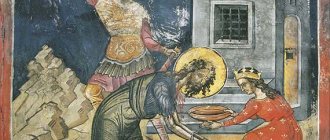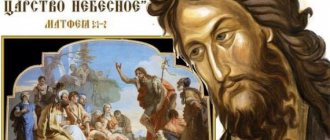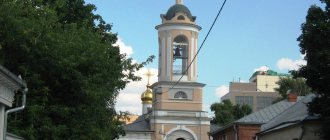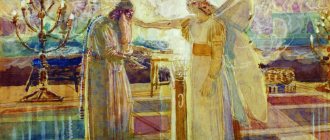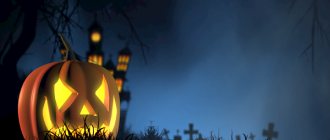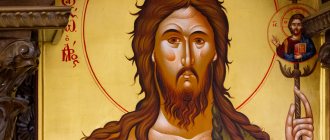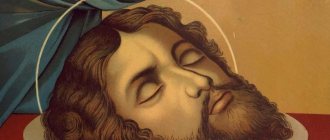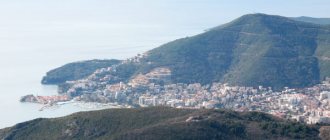On September 11, the Church celebrates the Beheading of the Prophet, Forerunner and Baptist of the Lord John. The day of the martyrdom of “the greatest of those born of women” is described by the evangelists Matthew (Matthew 14:1-12) and Mark (Mark 6:14-29). What happened to Herod next? Where is the head of the saint today? Why does fasting on this day mean becoming freer from slavery to pleasure?
After the death of Herod the Great, the Romans divided the territory of Palestine into four parts, appointing a ruler from among their proteges to each of them. Herod Antipas received Galilee under his control from Emperor Augustus. John the Baptist denounced the Tetrarch for the fact that, having left his legitimate wife (the daughter of the Arabian king Arethas), he illegally cohabited with Herodias, the wife of his brother Philip. For this, Herod imprisoned the saint. Some historians argue that Herod did this not so much out of anger at John the Baptist, but because he wanted to protect him from his beloved, knowing her vindictive nature. Herodias was extremely angry with the prophet.
The beheading of John the Baptist occurred during a feast in honor of Herod's birthday, which was attended by nobles, elders and commanders. Herodias' daughter Salome (Salome) danced in front of the guests, thereby winning over Herod, who vowed to give her everything she asked for - even half of his kingdom. At the suggestion of her mother Herodias, who had the opportunity to take revenge on Saint John and get rid of reproaches and accusations forever, Salome asked to give her the head of John the Baptist and bring it on a platter. Herod was embarrassed because he feared the wrath of God for killing the prophet, as well as the wrath of the people, since the Forerunner was loved by the inhabitants of Galilee. At the same time, it is known from the Gospels that Herod listened to Saint John in many respects and acted according to his words - but, as St. writes. John Chrysostom, the ruler “reigned over pleasures, or rather, was a slave to pleasures.” Chrysostom believes that, most likely, Herod covered himself with an oath as a plausible pretext - in fact, the true reason for his action was the fear of losing Herodias.
And he keeps his oath, given in the presence of distinguished guests: he gives the appropriate order - and the Beheading of John the Baptist occurs. There is a legend according to which the lips of the dead head of the prophet continued to denounce the ruler: “Herod, you should not have the wife of your brother Philip.” After this, Herodias, in a rage, pierced the prophet’s tongue with a needle and buried the head of the Baptist in an unclean place.
Herod continued to rule for some time after the Beheading of John the Baptist - the gospel story testifies that Pontius Pilate sent Jesus Christ bound to him (Luke 23:7-12).
The further fate of Herod and Herodias was sad. The lovers were afraid that Saint John would rise from the dead, and Herod, when he began to preach Jesus Christ, was horrified by this, saying: “This is John the Baptist; he rose from the dead, and therefore miracles are done by him.”
As time passed after the Beheading of John the Baptist, Salome, crossing the Sikoris River on ice in winter, fell under the water and the ice squeezed her in such a way that her head was on the surface and her body was in the icy water. She tried in vain to get out, but she did not succeed - this continued until sharp blocks cut her neck. Salome's body was not found, but the head was brought to Herod and Herodias, just as the head of John the Baptist was once brought. The beheading of John the Baptist also affected the fate of Herod himself - in revenge for the dishonor of his daughter, the Arabian king Arefa sent his troops against him. Herod was defeated and for this reason angered the Roman emperor Caligula. He was exiled with Herodias to prison in Gaul, and then to Spain.
After the Beheading of John the Baptist, his disciples buried the body of the saint in the Samaritan city of Sebastia. The holy head of John the Baptist was found and buried in a vessel on the Mount of Olives. Subsequent events developed as follows: one ascetic was digging a ditch for the foundation of a temple, found a shrine and kept it with him. And before his death, fearing that the shrine might be desecrated, he hid it in the ground in the same place where he found it.
In the year 452, the prophet indicated in a vision the place where his head was hidden - and it was again found, after which it was transferred to Emessa, then to Constantinople. In memory of this, another holiday was established, inextricably linked with the Beheading of John the Baptist - the discovery of his venerable head. The feast of the first and second miraculous discovery is celebrated by the Church on March 8 (February 24, old style).
During the time of iconoclastic persecution, the head was taken to Komani (Abkhazia), known as the place of exile and death of St. John Chrysostom, and hidden in the ground. After the restoration of icon veneration of St. Patriarch Ignatius at night during prayer was shown the place where the honest chapter was kept. Thus the shrine was found again. This event is celebrated on June 7 (May 25) as the Third Finding of the Head of St. John the Baptist
History of the Feast of the Beheading of John the Baptist
The emergence of Memorial Day is directly related to the personality of John the Baptist. This figure is certainly one of the most significant that is mentioned when describing the earthly life of Jesus the Savior.
John the Baptist is the harbinger of the appearance of the Messiah, his herald. Jesus spoke of him as an angel, a devoted friend, and a holy follower of the teachings of God.
The story begins with the appearance of the Archangel Gabriel to the childless elder Zechariah, who was a clergyman during the reign of King Herod. After the next event, Gabriel appears before Zechariah and tells him that he will soon give birth to a son. Zechariah begins to doubt this, because he and his wife have already despaired of having children; the old age of the spouses prevents this. Gabriel, in anger, silences Zechariah, declaring that his voice will return when his son is born.
Elizabeth, Zechariah's wife, finds out that she is expecting a child, but is ashamed of her old age and hides it for a long time. Finally, a son is born. Elizabeth says that he will be called John. Deviations from family traditions are viewed with caution by many relatives. But the desire to name his son John is confirmed by Zechariah, who finds his voice.
Herod, who dreams of getting rid of the coming savior, sends assassins to Zechariah’s house, but the mother manages to pick up her son and go with him into the desert. Zechariah dies at the hands of the executioners, Elizabeth saves her son, but 40 days after the death of her husband she dies herself. This is how the story of the wanderings and wanderings of John the Baptist begins.
For a long time, the Baptist of the Lord lived in the desert, he prayed and read sermons. On the day of his 30th birthday, the Lord appeared to him and ordered him to tell people about the coming of the Savior.
John left the desert and went to the Jews. There he announced the birth of the Messiah and began to glorify him during his lifetime. After numerous adventures, meeting Jesus, and his baptism in the Jordan River, John was executed by the executioners of King Herod Antipas the Great.
The fact is that John openly declared that the king had violated one of the seven commandments. The Forerunner said that Herod left his lawful wife and began to cohabit with his brother’s wife. Thus, he violated the rule of non-adultery. Herodias, with whom Herod lived, demanded that John be put in prison. The king listened to his mistress. The Forerunner was thrown into prison. He stayed there for a whole year. People came to the walls of his prison, John read sermons, talked a lot with people who devotedly loved him for his character and simplicity.
At the celebration of Herod's birthday, the irreparable happened. Herodias's daughter, Salome, performed a skillful dance, which greatly pleased the king. He ordered her to ask for whatever she wanted. At the instigation of her mother, Salome asked for the head of John the Baptist on a platter.
Herod did not want to kill the Forerunner, because he knew about the people’s love for him, but he had to keep his promise. The executioners cut off the head, laid it on a plate, and gave it to Salome. The daughter presented the dish to her mother with a low bow.
Herodias, being vengeful and evil, pierced the saint’s tongue with sharp rods, then plunged a dagger into his head. She was afraid that the saint would be able to resurrect and take revenge on her, so she herself buried the head away from the body. This is associated with difficulties in obtaining the head of the Forerunner.
Herod, Salome and Herodias were punished for their sins during earthly life. According to church teachings, after death they went to serve hellish punishment. The deaths of all participants in the events were terrible. For example, Salome died when she crossed a river and fell through the ice. Thick layers of ice squeezed her body like a vice. From the outside, many who saw her dead body had the impression that Salome was dancing.
The first discovery of the head is dated to the 4th century, the third and last is recorded in the 9th century. After connecting the head with the body and receiving the miraculous image, the traditional veneration of all events related to the life and death of John the Baptist began.
Biography of the Prophet
John the Baptist is the most revered saint after the Blessed Virgin Mary. According to legend, he was born just six months before the Nativity of Christ. John was the son of God-fearing parents Zechariah and Elizabeth, who had no children until old age. The birthplace of the future baptist was the Palestinian city of Hebron.
The story of the birth of John the Baptist is shrouded in ancient legend. Father John, who served as a priest in the temple, was informed of the upcoming birth of his son by the archangel. The heavenly messenger said that this child would become a great prophet and forerunner of the Messiah and would convert many nations to the true faith. At first, Zechariah doubted the sign given to him, for which he was struck dumb, but after the appearance of his son and fervent prayers of gratitude, he received healing from the Lord.
When the boy was born, by order of King Herod they tried to find him and take his life. John's parents were killed, while he himself, protected by a guardian angel, survived. As a young man, John went to the Judean desert, where until he was 30 he lived in a wild cave, talked with God, fasted and tirelessly read prayers. Later, he began to preach a lot, made amazing prophecies, baptized people who wanted to accept the Christian faith, and helped them cleanse themselves of their sins. Due to his incredible holiness, many considered John to be the real Messiah, but he never ceased to claim that he was only the forerunner of the true Savior.
One day Jesus Christ appeared to the prophet and asked to perform the rite of baptism on him. This is why John is also called the Baptist. The most important event for Christianity took place in the waters of the Jordan, accompanied by the appearance of the Holy Spirit and the appeal to the Messiah of God the Father.
The meaning of the holiday for the Orthodox
The beheading falls into the category of several holidays associated with the name of John the Baptist. Christians traditionally commemorate the Nativity of John, the three Findings of the Head, the Council and Epiphany.
For Russian Orthodoxy, this date means a harbinger of the coming of Jesus, the advent of a better future. According to church scriptures, the personality of the Forerunner is inseparable from the figure of Jesus Christ. This image stands apart in the arena of Christianity; it is an example of a tragic and majestic fate. The Forerunner constantly talks about following traditions, submission to fate and humble repentance.
Icon depicting the event
John the Baptist sincerely believed in the Lord, preached about the Kingdom of Heaven, and prepared the people for the descent of the Messiah. The prophet baptized Jesus himself and called on the majority to recognize him as the Son of God.
The holy face is an inseparable part of the entire celebration. The image demonstrates the line beyond which human hatred can cross.
- In many cities of Russia there are lists depicting the cutting off of the venerable head of John the Baptist. These icons, showing terrible events, are very popular and significant.
Beheading of John the Baptist - The most ancient images were painted in the early period of the formation of Byzantium. In the center of the plot is the prophet John bowing before a warrior with a sword. In alternative versions - the severed, honest head of the saint and his body, from which blood flows.
- On ancient Russian icons the head of the prophet was displayed in a bowl against the background of the church. On both sides of the main object were the clergy and Emperor Constantine.
- In front of the lists, they pray for good health and the preservation of life, they ask for healing of the soul from devilish obsessions, for strengthening faith and giving strength. Holy images are capable of granting salvation from defilers and enemies.
How to spend this day
Beheading Day falls on September 11th. During the holiday, it is strictly forbidden to consume meat, fish, and dairy products. Refusal of gluttony is an obligatory attribute of commemoration. The clergy comment on this rule as refusing food as a sign of disrespect for Herod, who raised his sword over John's head.
These requirements were established by the holy fathers of the first church times. The commandments about abstinence during the commemoration of the Beheading are described in the Jerusalem statutes of Saint Sava the Sanctified.
Common superstitions
The holiday has a long history, so many traditions are intertwined with pagan customs. For example, the Nativity of John the Baptist falls on the pagan holiday of Ivan Kupala. Thus, there are many superstitions associated with the celebration of the Beheading:
- Belarus. You can’t eat anything round, put round dishes on the table. Forks or knives should not be used during meals. The superstition is that, according to legend, the saint's head grows back to his body over the course of a year, but when people start using cutlery, it falls off again.
- Southern Slavs. You cannot eat or drink anything red, as it is the blood of St. John.
- East Slavs. It is strictly forbidden to keep meat in the house during the Beheading. This is due to the fact that the ancient pagans believed that meat meant executions and murders.
Superstitions have nothing to do with church traditions. The only thing the church requires is the observance of strict fasting.
Golovosek: folk traditions, what not to do on September 11
Golovosek , or Lenten Ivan is considered the “official” beginning of Indian summer. According to tradition, large Lenten feasts were held on Ivan, and the harvesting of root crops, primarily turnips, began. Turnips (as well as other Lenten products) were generously given to the poor. Therefore, September 11 was sometimes called the Turnip Day .
The day dedicated to such a tragic event was considered “terrible” and was full of prohibitions.
It was impossible to work on the holiday; violators were promised all sorts of troubles, even death.
Women were forbidden to sing and dance, so as not to resemble the dissolute Salome.
It was impossible to break the fast; it was believed that John would severely punish for this. Feasts were allowed, but strictly with Lenten food.
It was impossible to eat anything round (in memory of John’s severed head) - neither freshly harvested turnips, nor apples, nor round pancakes and pies. It was especially strictly forbidden to chop round heads of cabbage (here two prohibitions coincided - on round and on sharp). We tried not to eat or drink anything red, the color reminiscent of blood.
Round plates and dishes were also prohibited, in memory of the dish with the head of John. Housewives baked long Lenten pies, which they placed on special boards.
flickr.com/
It was strictly forbidden to use knives and cutting objects. Food could only be broken or bitten off. The saying went:
“Whoever uses a knife on Golovosek will be left without a head.”
It was forbidden to go into the forest for fear of snakes and wild animals, as well as fear of the forces of nature.
Girls and women were forbidden to comb their hair so as not to split it (by analogy with the cut off head of the prophet).
Children born on this day were promised various misfortunes in the future; also, important affairs were not started on Ivan Lenten; weddings were strictly prohibited. Those who violated it were promised various problems in family life, up to and including the death of a woman in childbirth.
By the way, the day was considered suitable for quitting drunkenness; you could drink wine (since it was a holiday), but only a little. The saying went:
“For fasting Ivan, sip no more than one glass.”
In addition, John was considered “responsible” for everything related to the head: they prayed to him for relief from headaches.
FBA "Economy Today" /
Iconography
The existence of John the Baptist as one of the most significant figures present during the earthly life of Christ prompted icon painters to create a variety of subjects.
Historians distinguish 2 main types of images. The icons depict the very moment of the crime, when the executioners cut off John’s head. These are quite gloomy canvases, where a flying head is depicted, as well as blood gushing from the body. The main shades of the paintings are crimson, black, gold and brown.
In one of the most famous icons, the upper part of the canvas is decorated with the image of Jesus Christ, who looks at the crime and folds his hands in a blessing gesture. The central part of the upper field contains an inscription that states that a beheading is taking place.
The second plot is the image of the death head of the Forerunner. She rests on a dish covered with a white cloth. The predominant shades of the icons are white, blue, dark brown. The saint's face is pale, his eyes are closed. The darkest spots on the icon are John’s hair and beard. The background under the head is dark red; behind the central image, the icon painters paint an azure-colored curtain. There is an inscription above the head: “Head of St. John the Baptist."
Many paintings are dedicated to the tragic event. Many of them depict Salome dancing before the righteous man. Others depict the moment of the crime when a sword or knife is raised over the Baptist.

